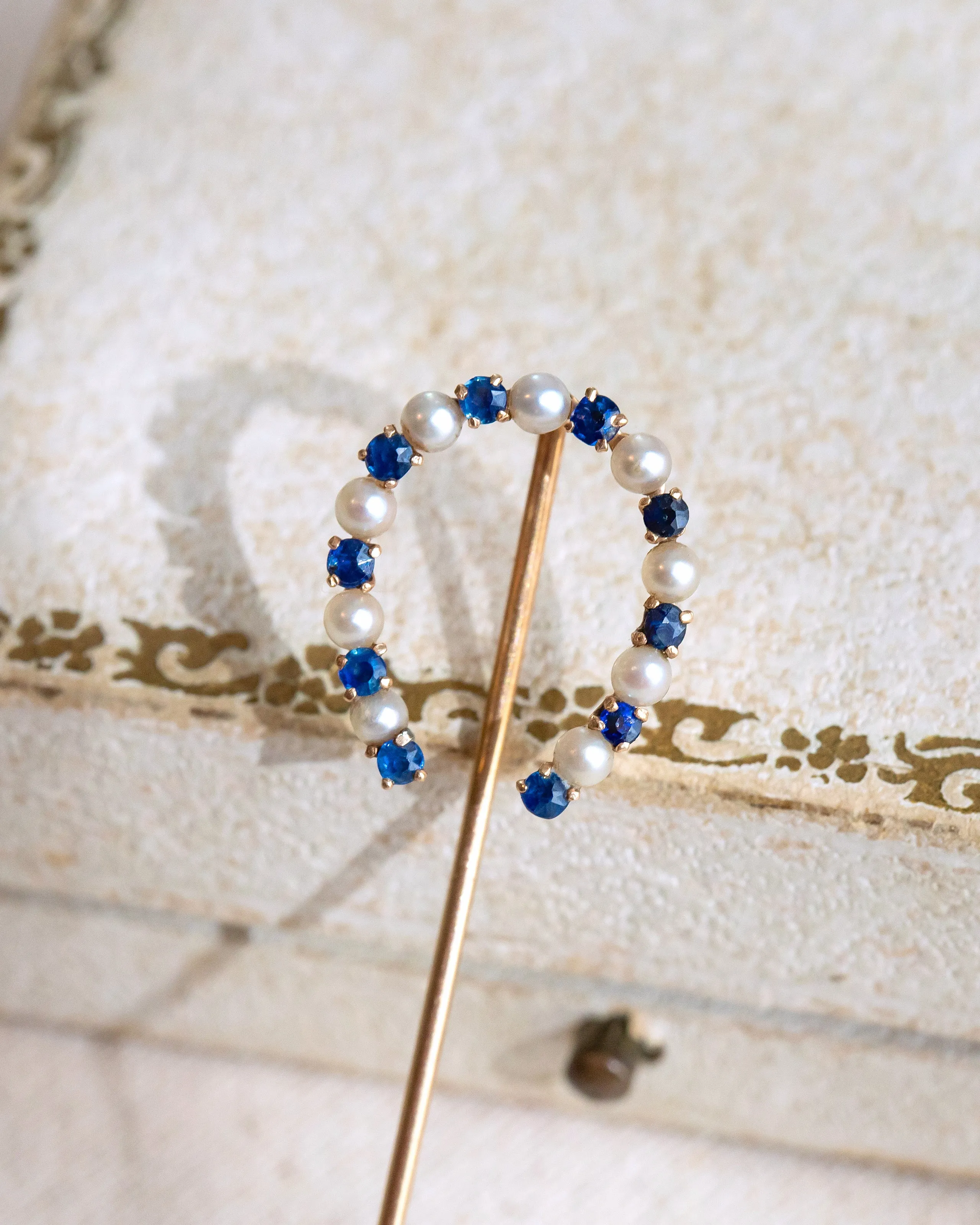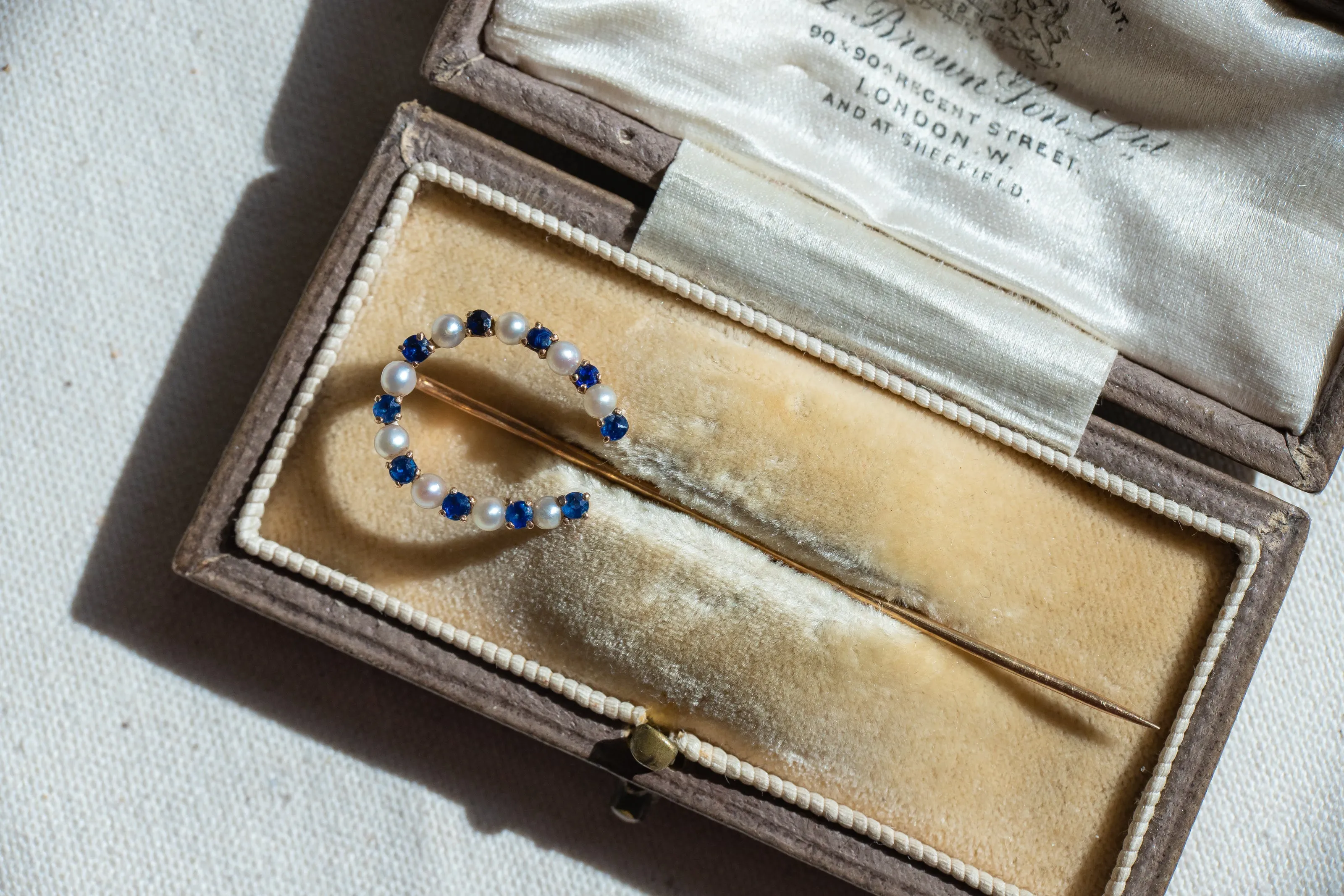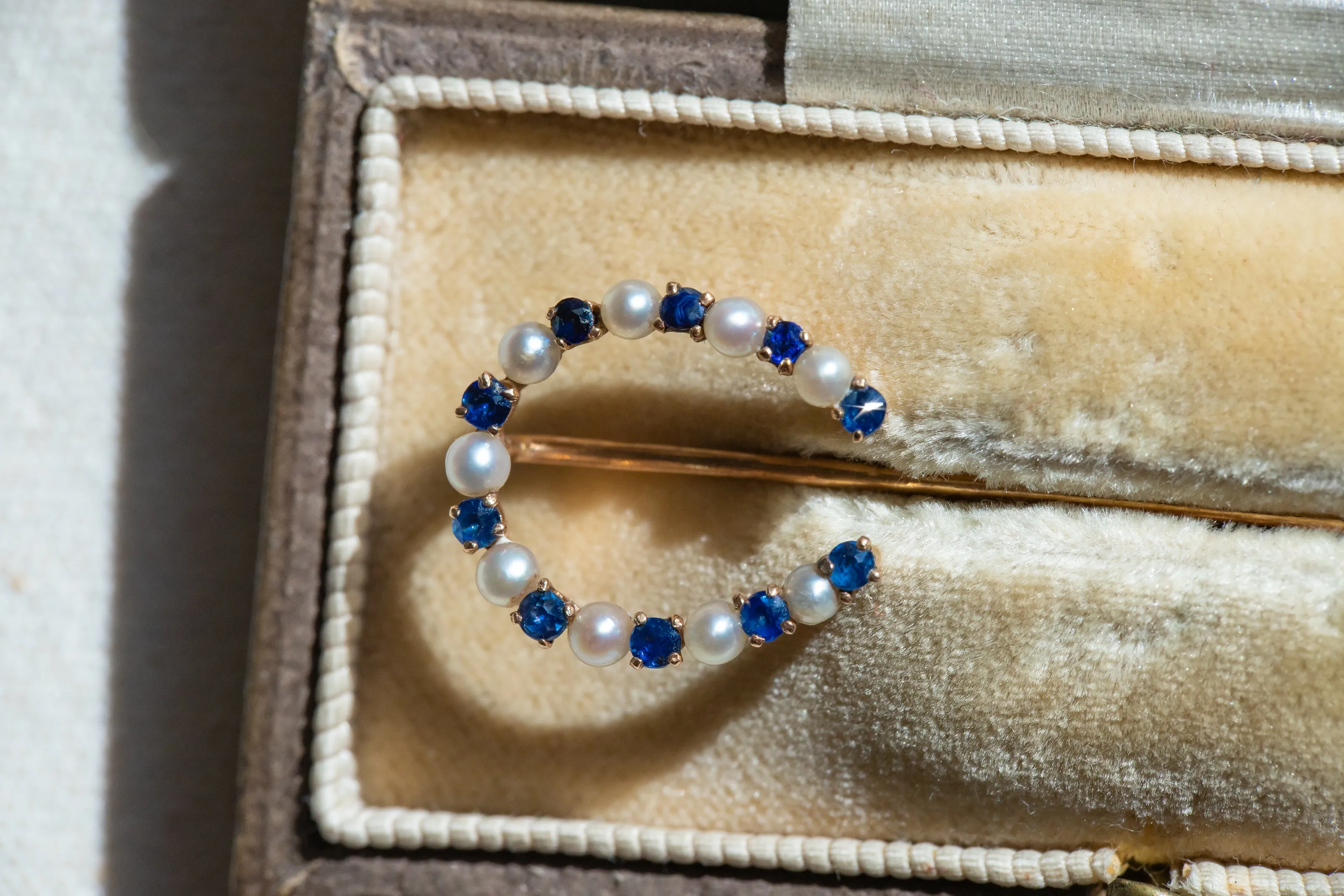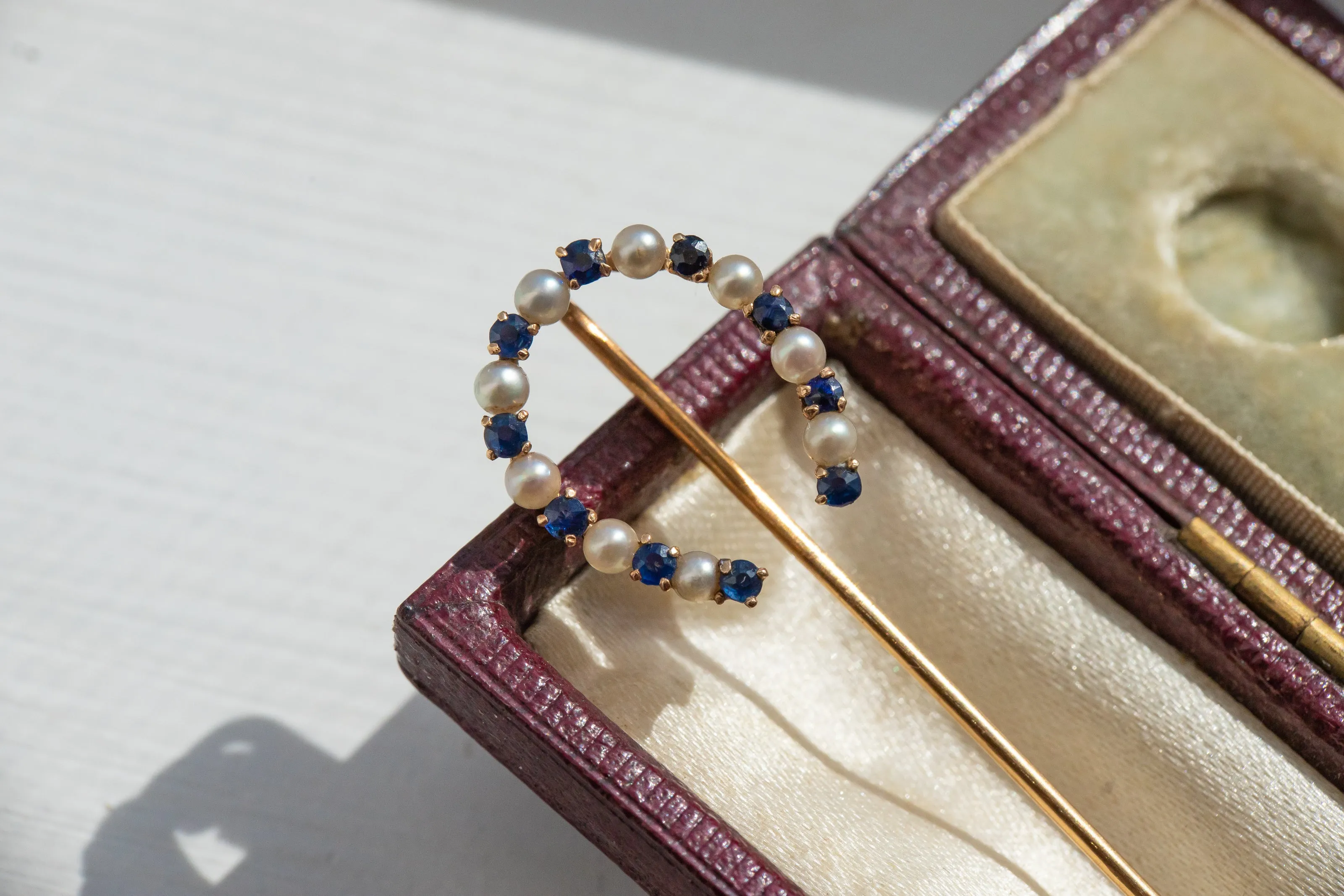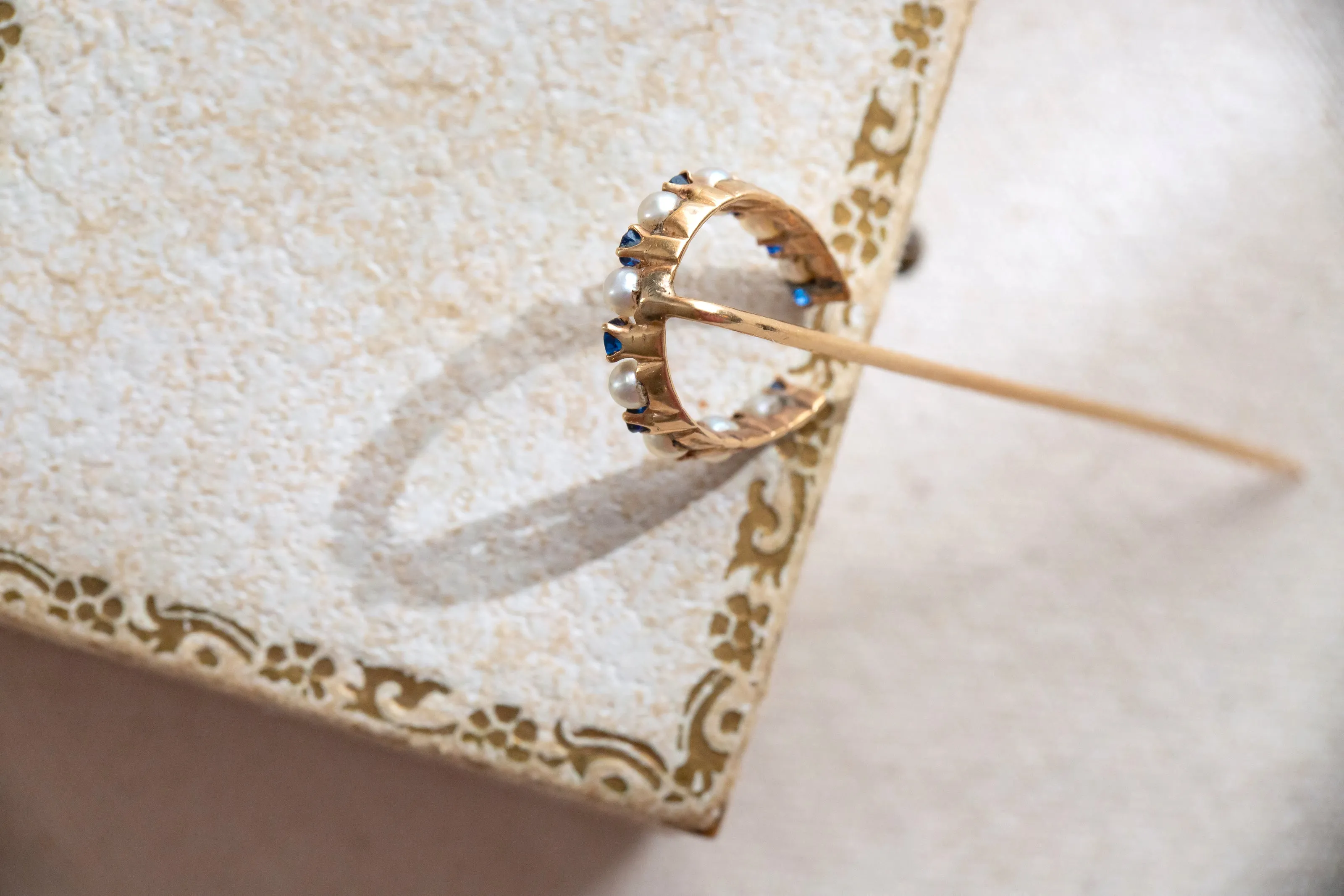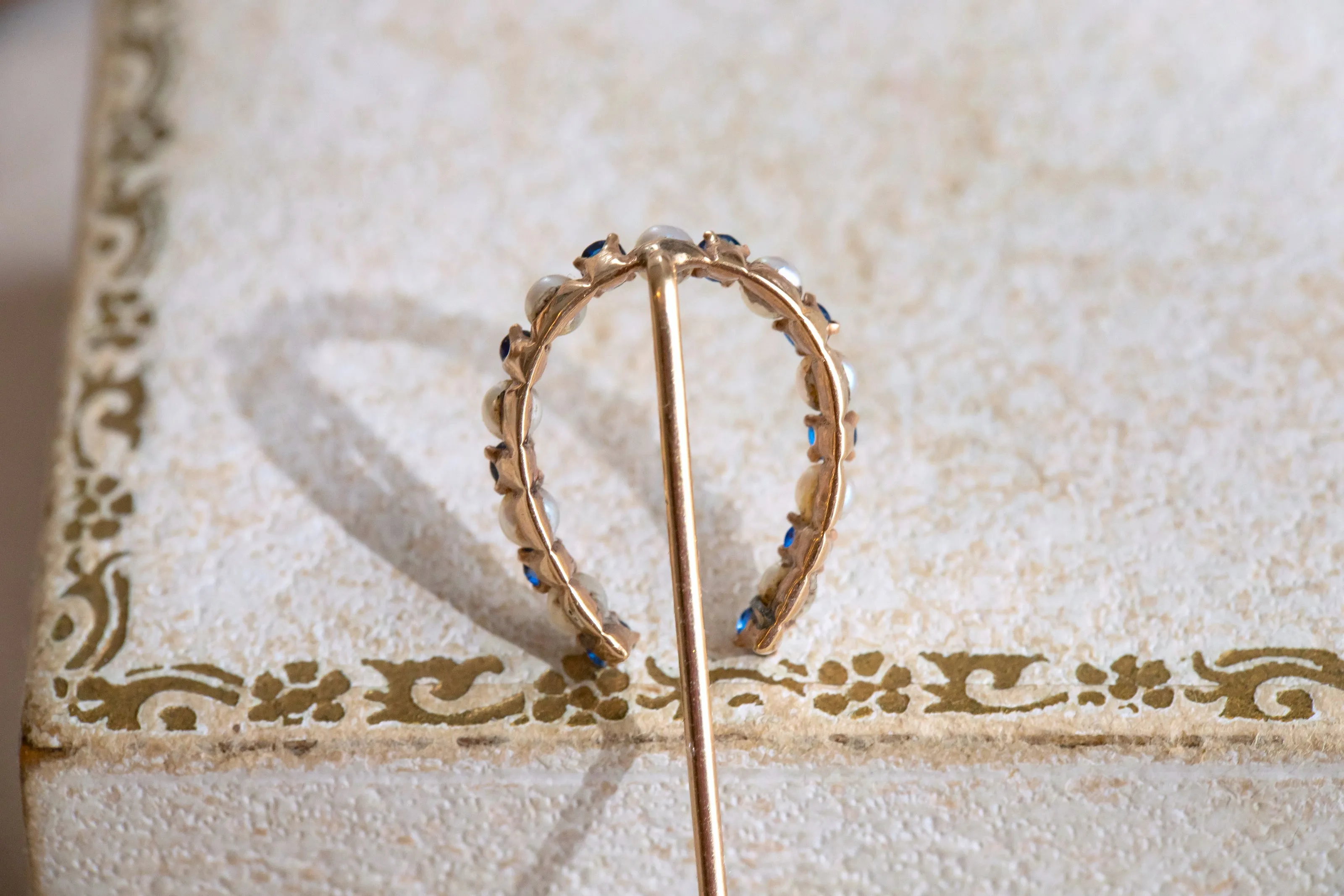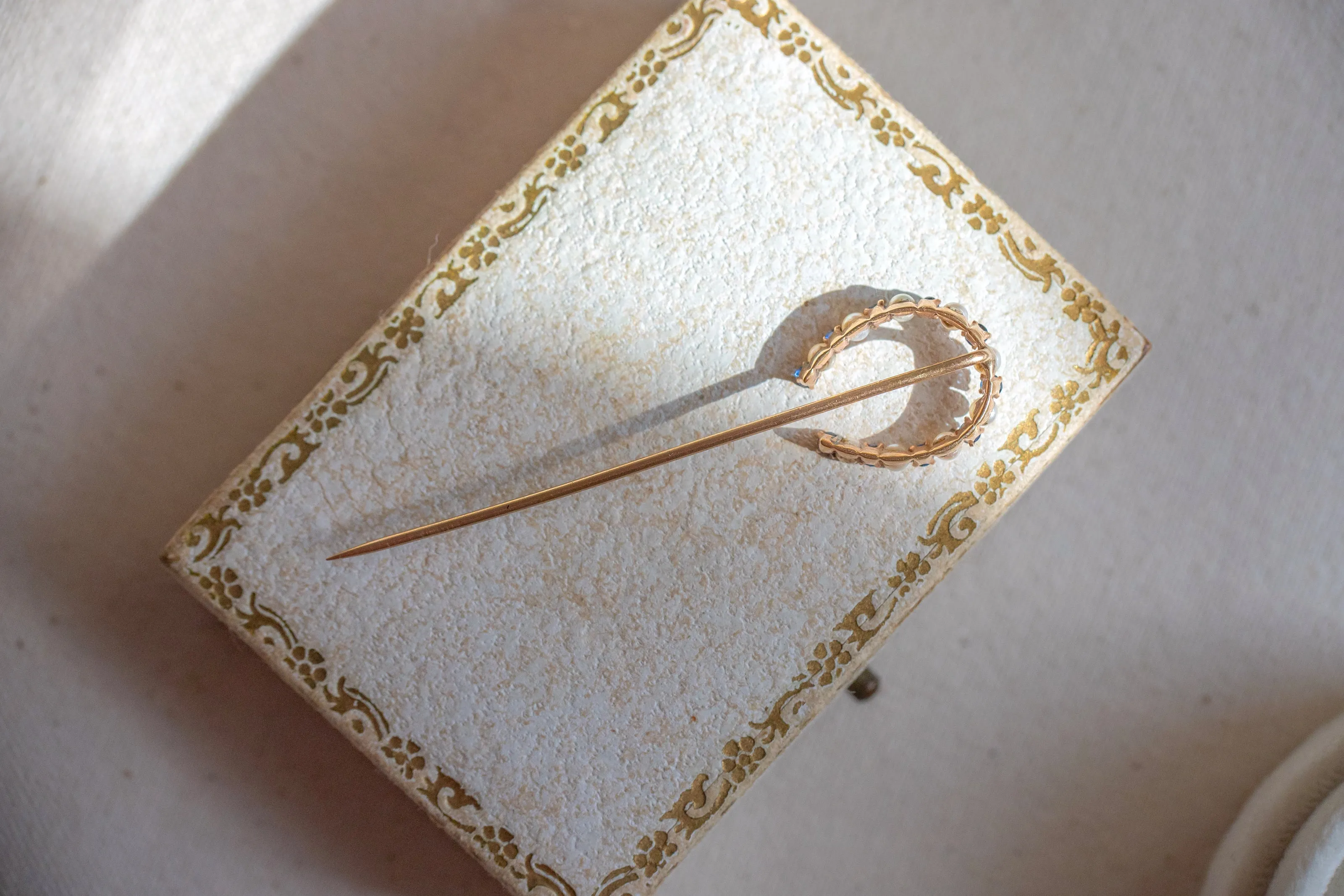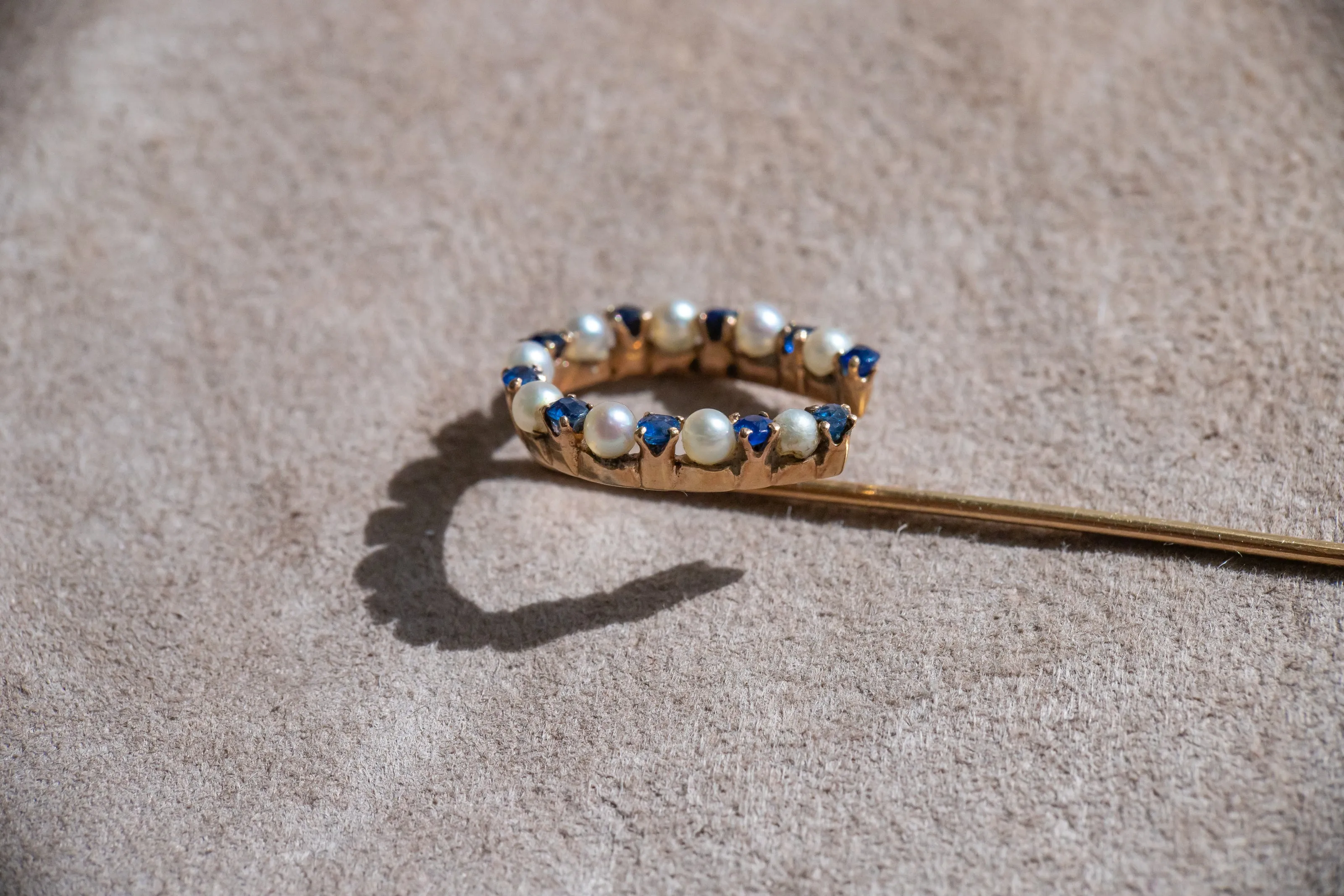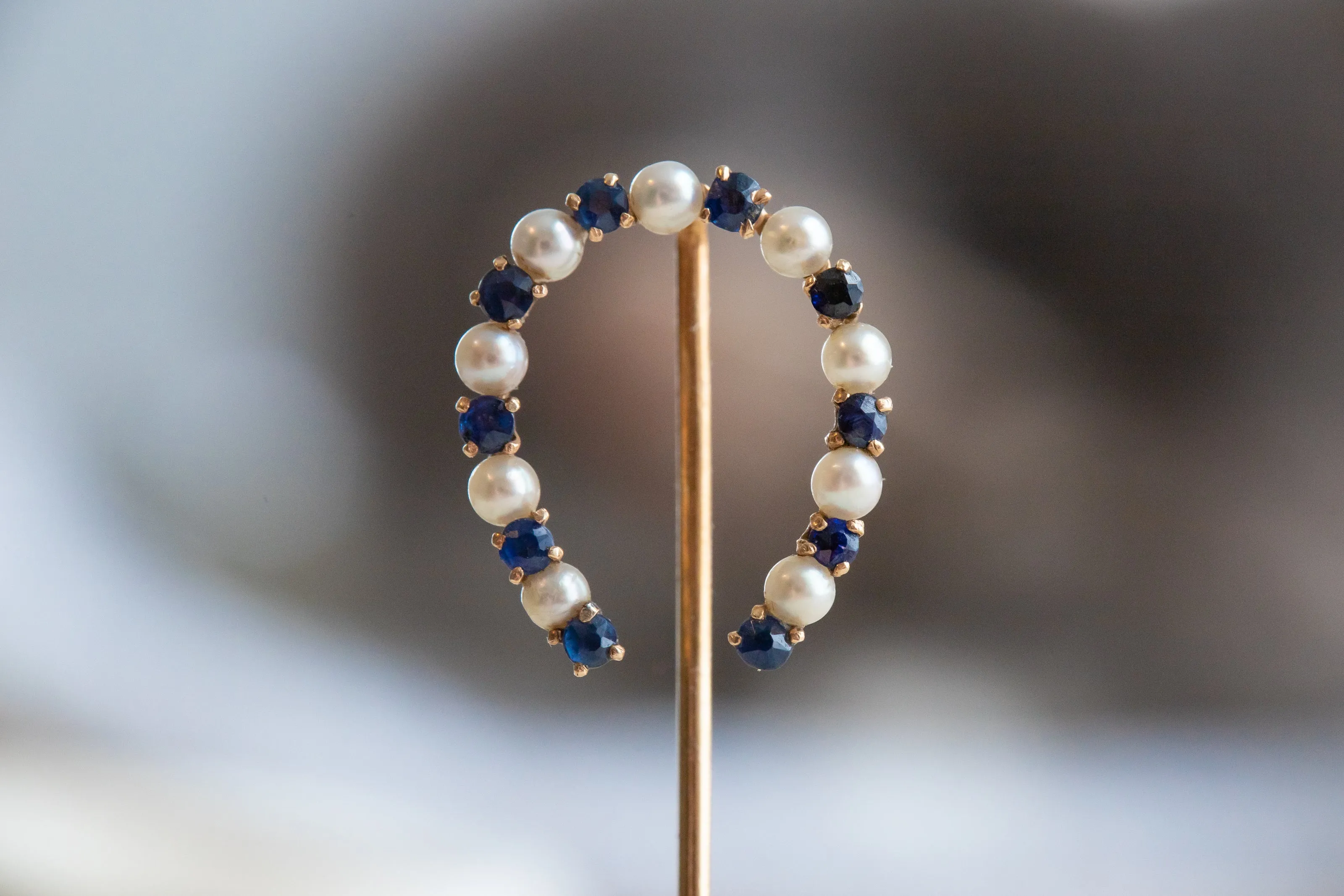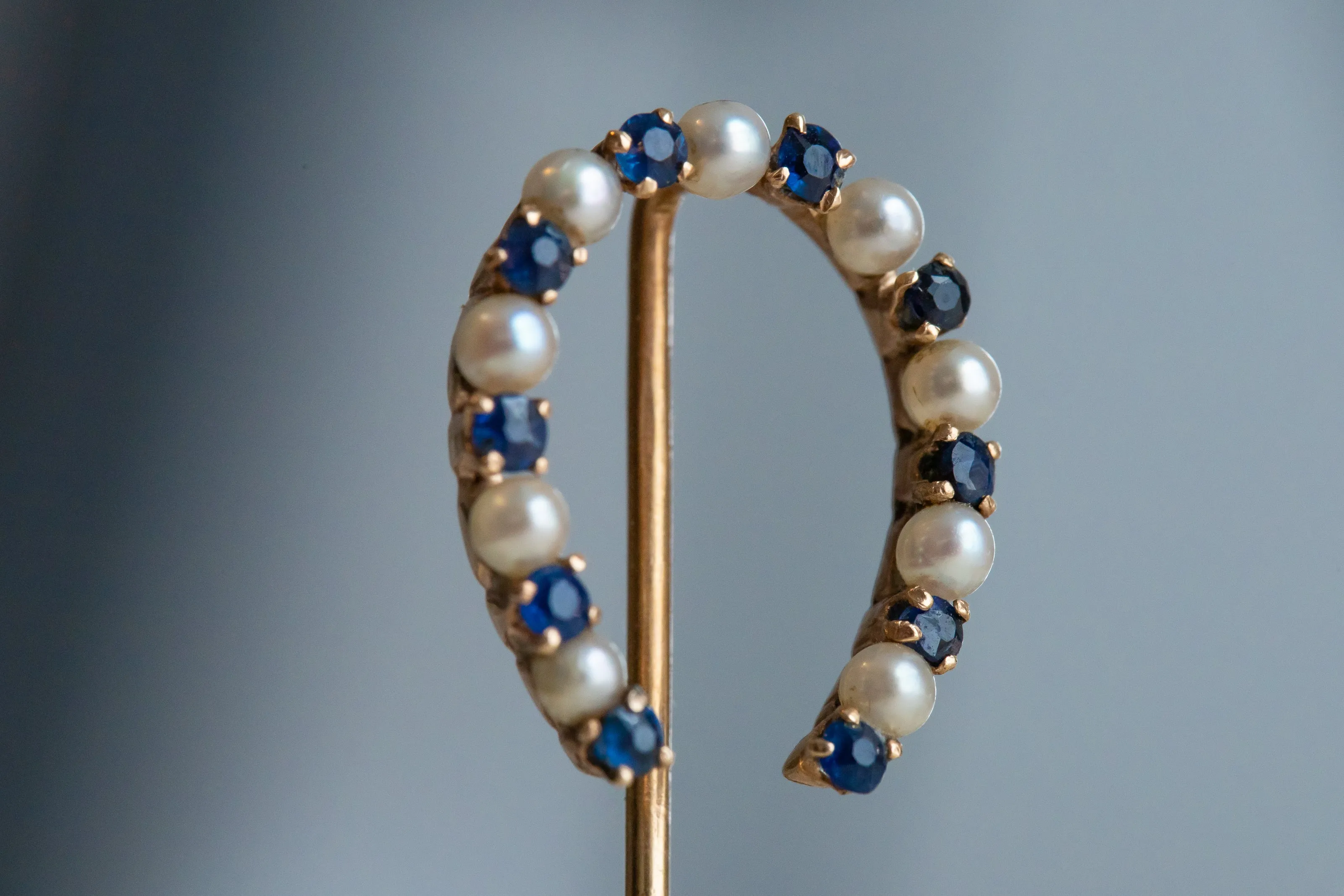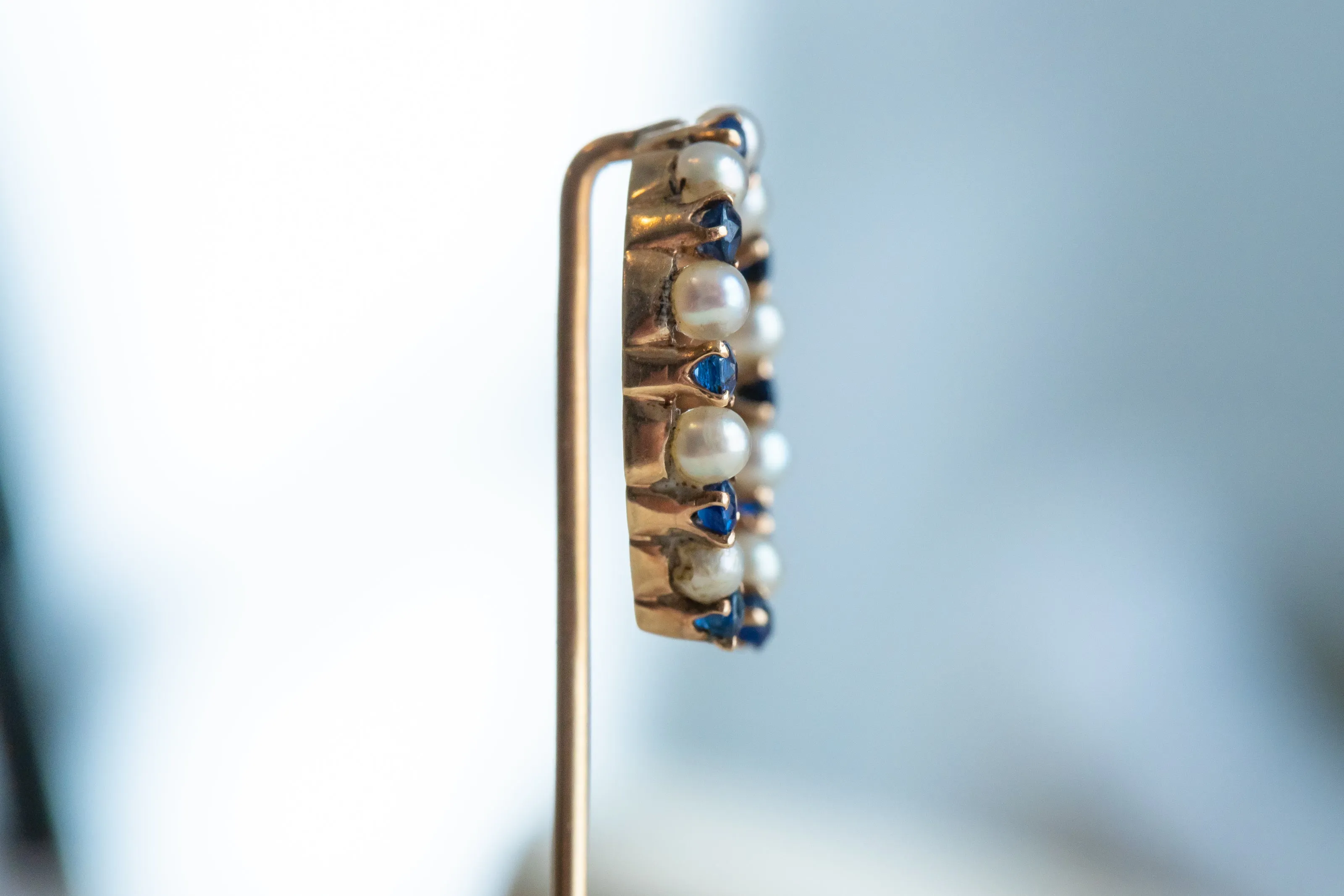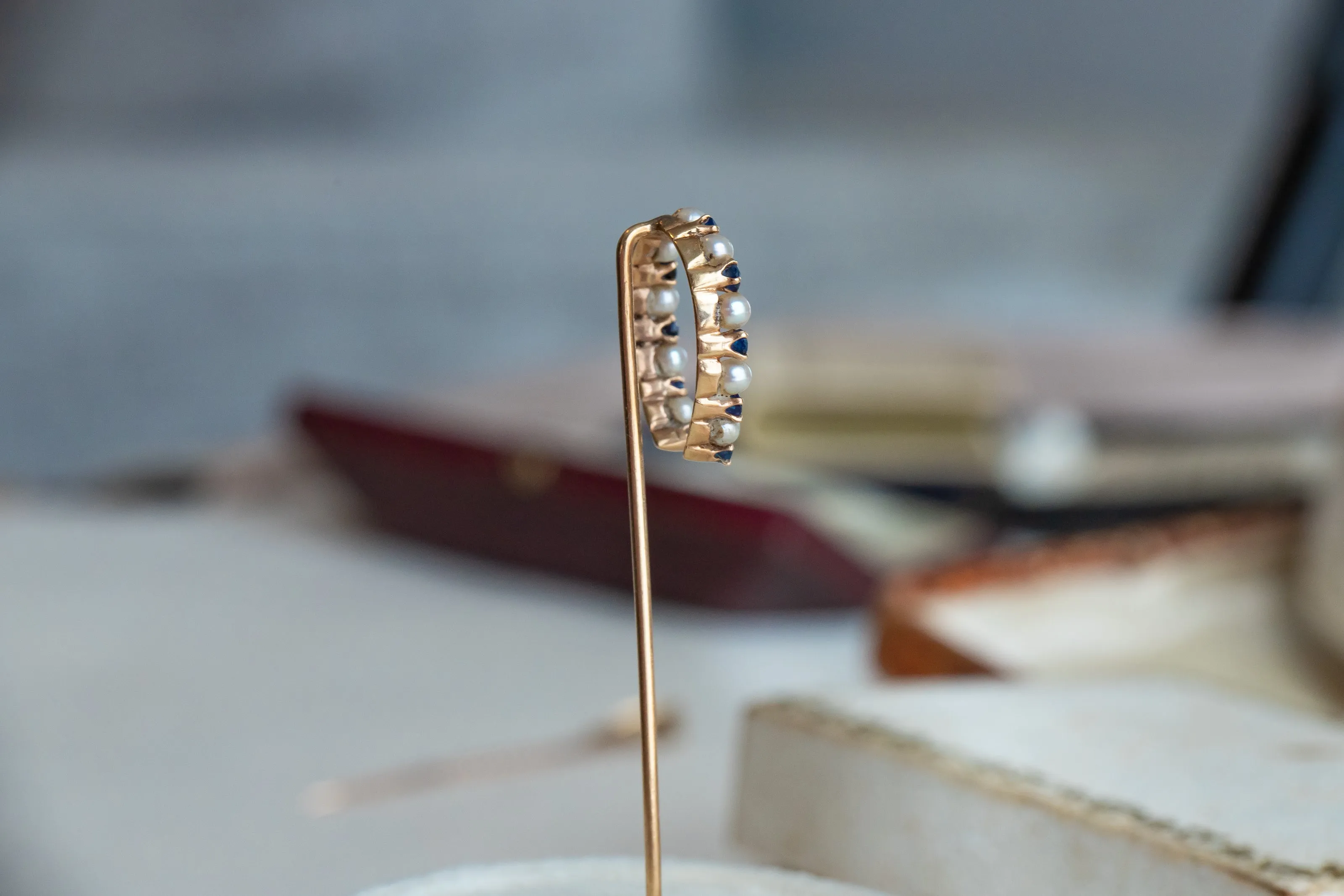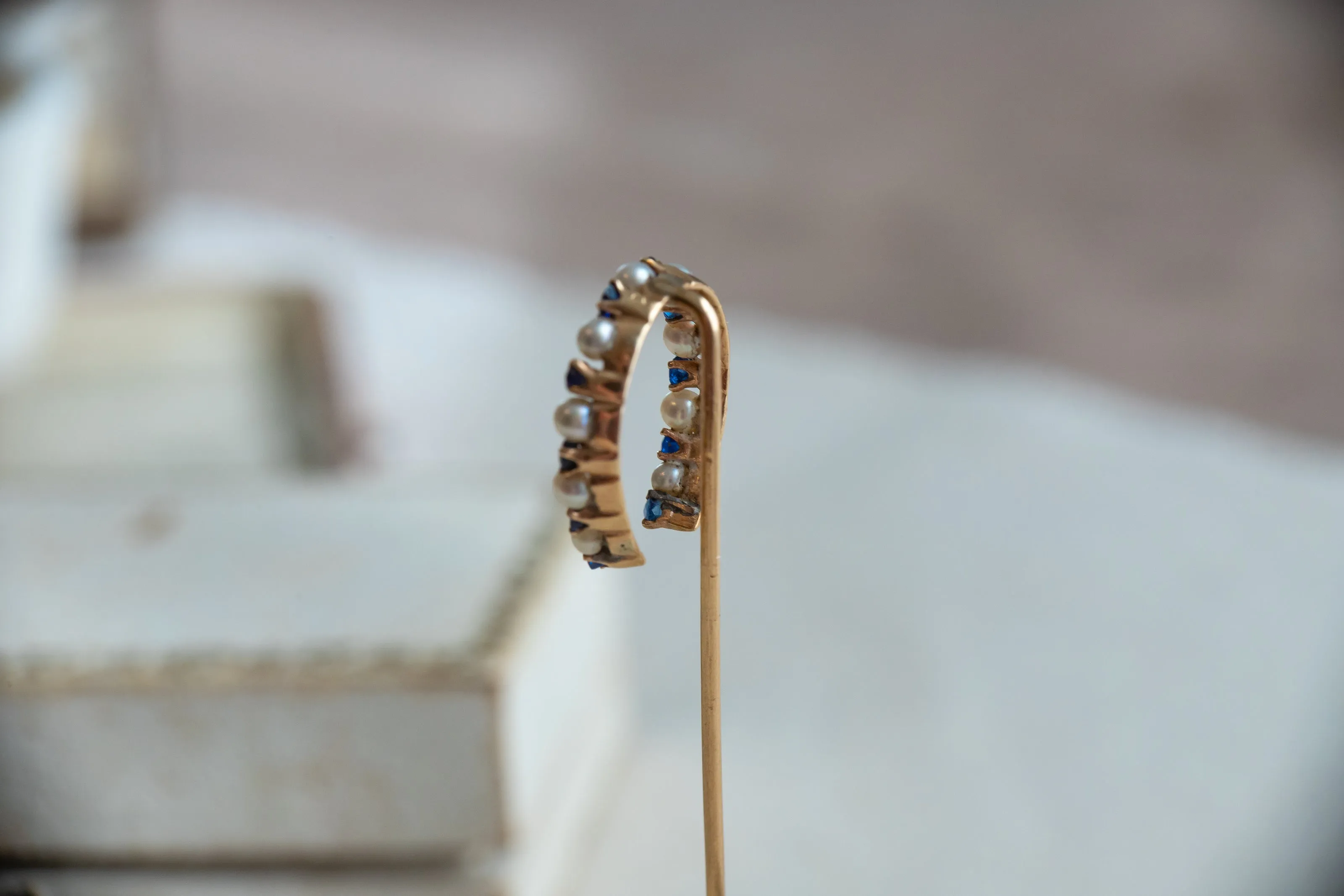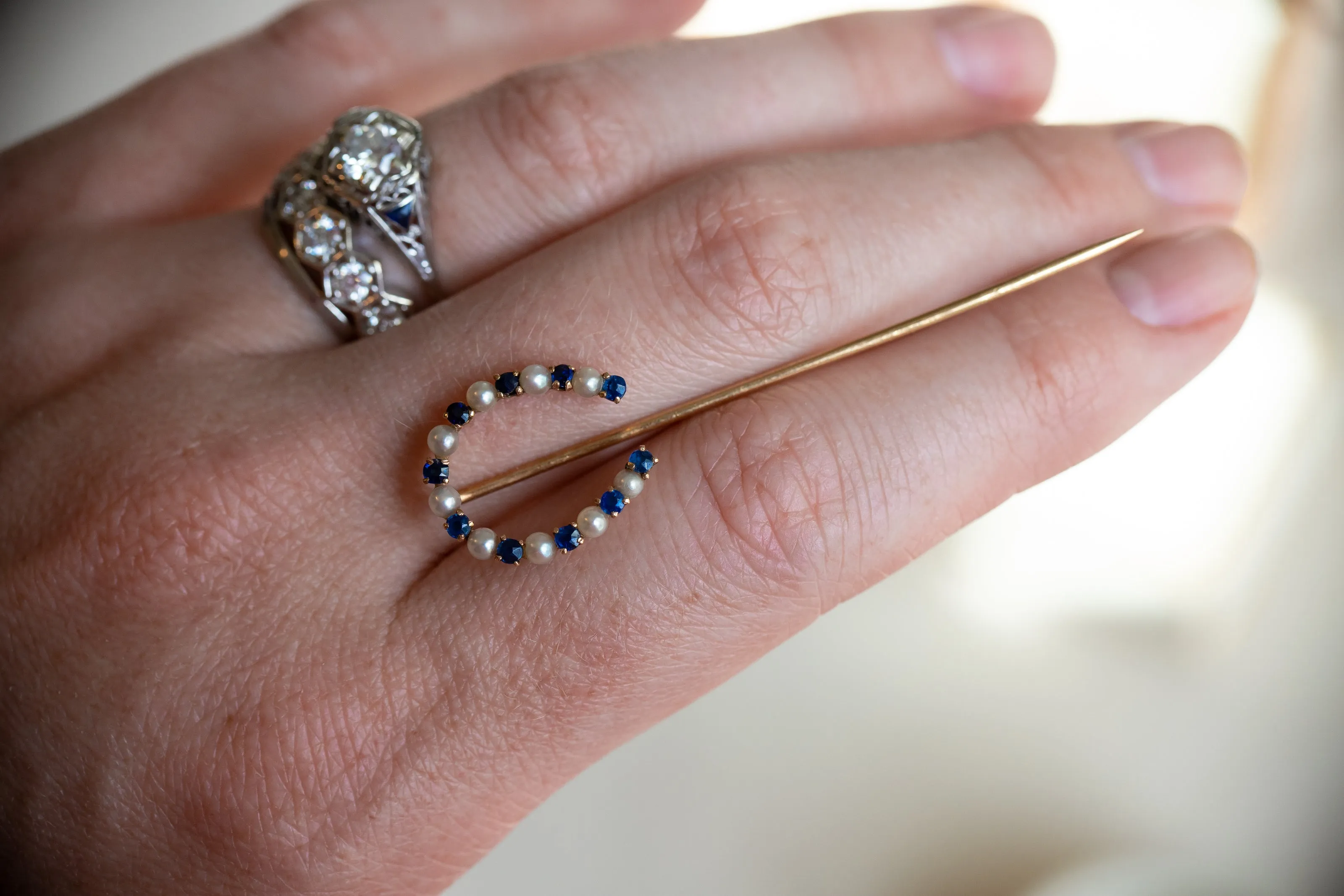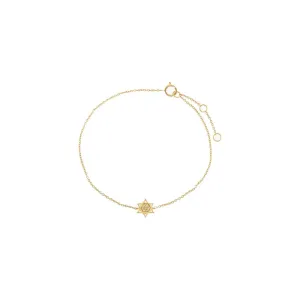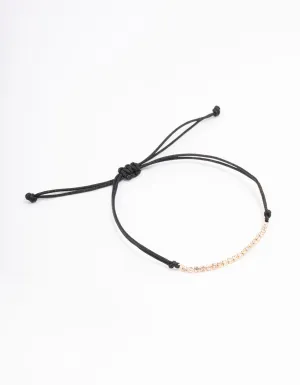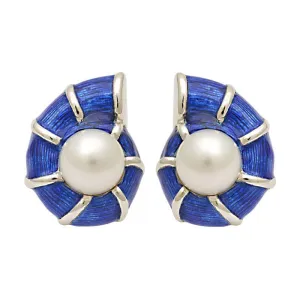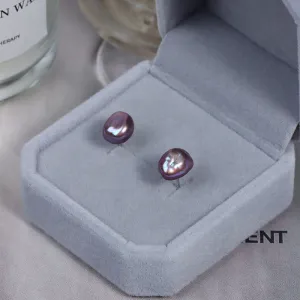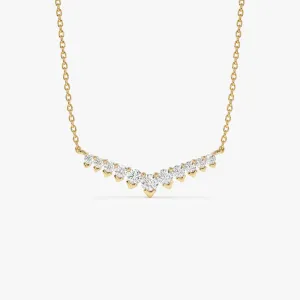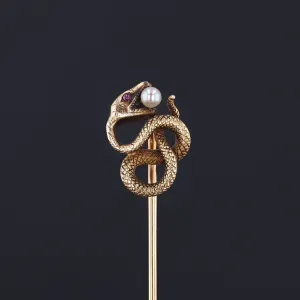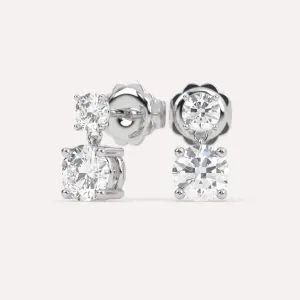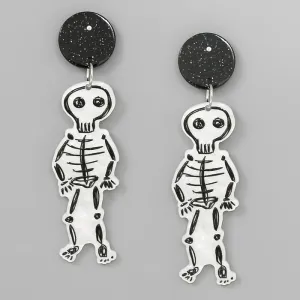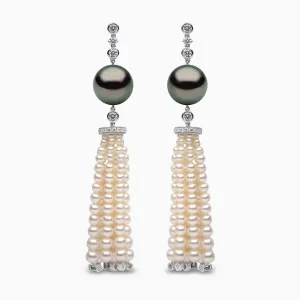General Information:
- Total Carat Weight: 1.42 ctw
- Total Precious Metal Weight: 1.34 dwt
- Precious Metal Material: 14k yellow gold throughout
- Dimensions: 61.13 mm overall length; head is 17.68 mm long x 15.17 mm wide x 4.07 mm deep excluding the stem to the reverse.
- Weight: A very nice 2.08 grams
- Markings: Unmarked but tested
- Era: This piece is believed to date to the 1870s to the early 1900s, during which time emblematic motifs (in this case, the horseshoe) made in sapphires and pearls was very common.
- Buyer Notes: Collectible, sizable and versatile, this pin is rich in symbolism and style, a relic of history and lore. Please note that this pin does not come with a clutch.
Specifications:
- Center Stone Type: Sapphire
- Center Stone Count: Ten (10)
- Center Stone Dimensions: 1.75 x 1.75 x 1.15 mm on average, as measured within mounting
- Center Stone Carat Weight: 0.25 ctw/0.025 ct each; calculated per the specific gravity of sapphire
- Center Stone Shape: Round Faceted Cuts (cut and faceted by hand)
- Center Stone Color: Dark navy blue
- Center Stone Clarity: Semi-translucent; appear opaque in some lights because of their depth of color
- Side Stone Type: Pearl
- Side Stone Count: Nine (9)
- Side Stone DImensions: 2.55 mm on average, as measured within mounting
- Side Stone Carat Weight: 1.17 ctw/0.13 ct each; calculated per the specific gravity of pearl
- Side Stone Shape: Spherical (whole pearls)
- Side Stone Color: White to cream
- Side Stone Clarity: Very good luster with no visible loss of nacre
The Story:
A sweet talisman for luck and blessings, this late Victorian stick pin dates to about 1870-1900, and features a sweeping arrangement of sapphires and pearls set into buttery yellow gold. This pairing is iconically Victorian, a timeless addition to any jewelry collection.
The horseshoe motif has long been popular as a symbol of both fortune and protection, two themes that have influenced jewelry for thousands of years. During the Victorian period, novelty and sporting jewelry grew to popularity as early as the first quarter of the 19th century, and by the 1870s, they were a dominant favorite by ladies and gentleman consumers alike. Horseshoes were meant to allude to the support of equestrian sports just as much as they conveyed good fortune, leaning most often toward the latter as the Victorian era drew to a close.
It is believed that the horseshoe can both gather and bestow luck; when worn ‘U’-shape up, the talisman catches good fortune for its wearer, and when worn ‘U’-shape down, it is thought to bless others with luck and protection, both friends and strangers alike. The emblem is not relevant solely to equestrians, as its illustrative meaning benefits all with favor and good will. Horseshoe jewelry was typically gifted as a celebratory gesture, intended as a blessing over the recipient.
The Victorians are heralded for their deep and wide-ranging symbolic associations evoked through jewelry. Every element, gemstone, design choice and motif carried with it a wealth of symbolism, and this stick pin is no exception: sapphires represent divine wisdom and holiness, as well as royal status and fortified intuition, while sapphires represent purity, holiness and new beginnings.

